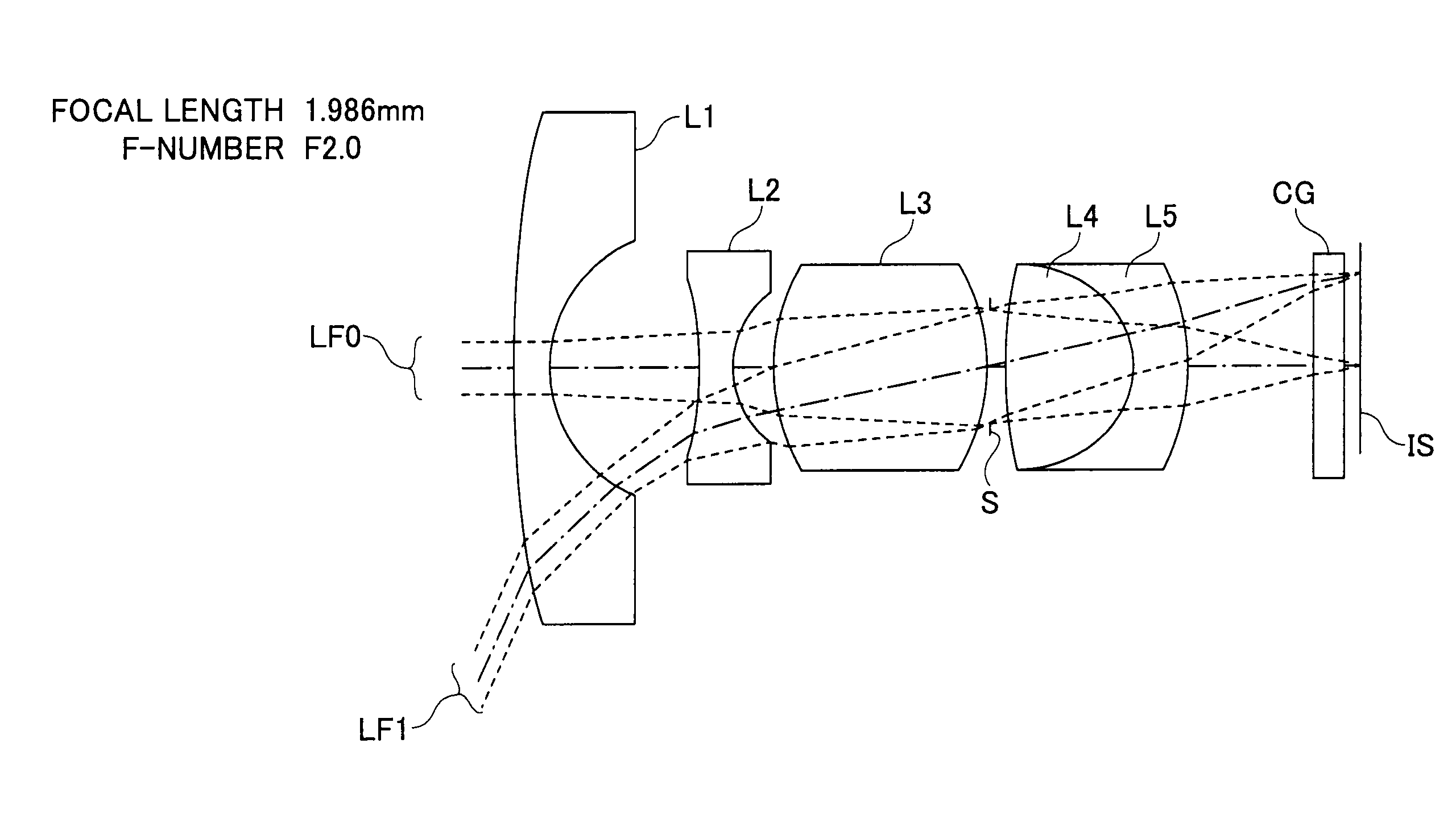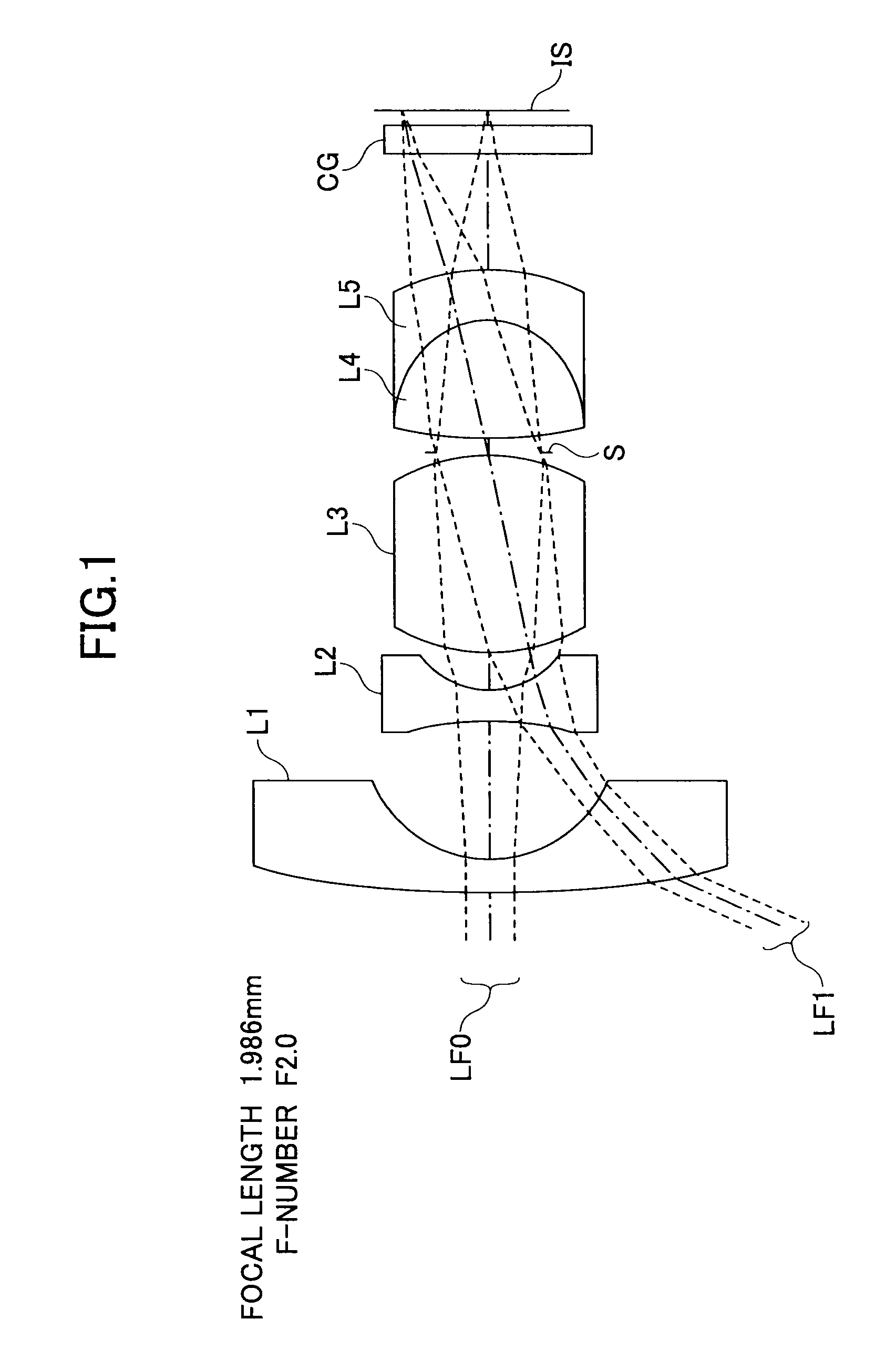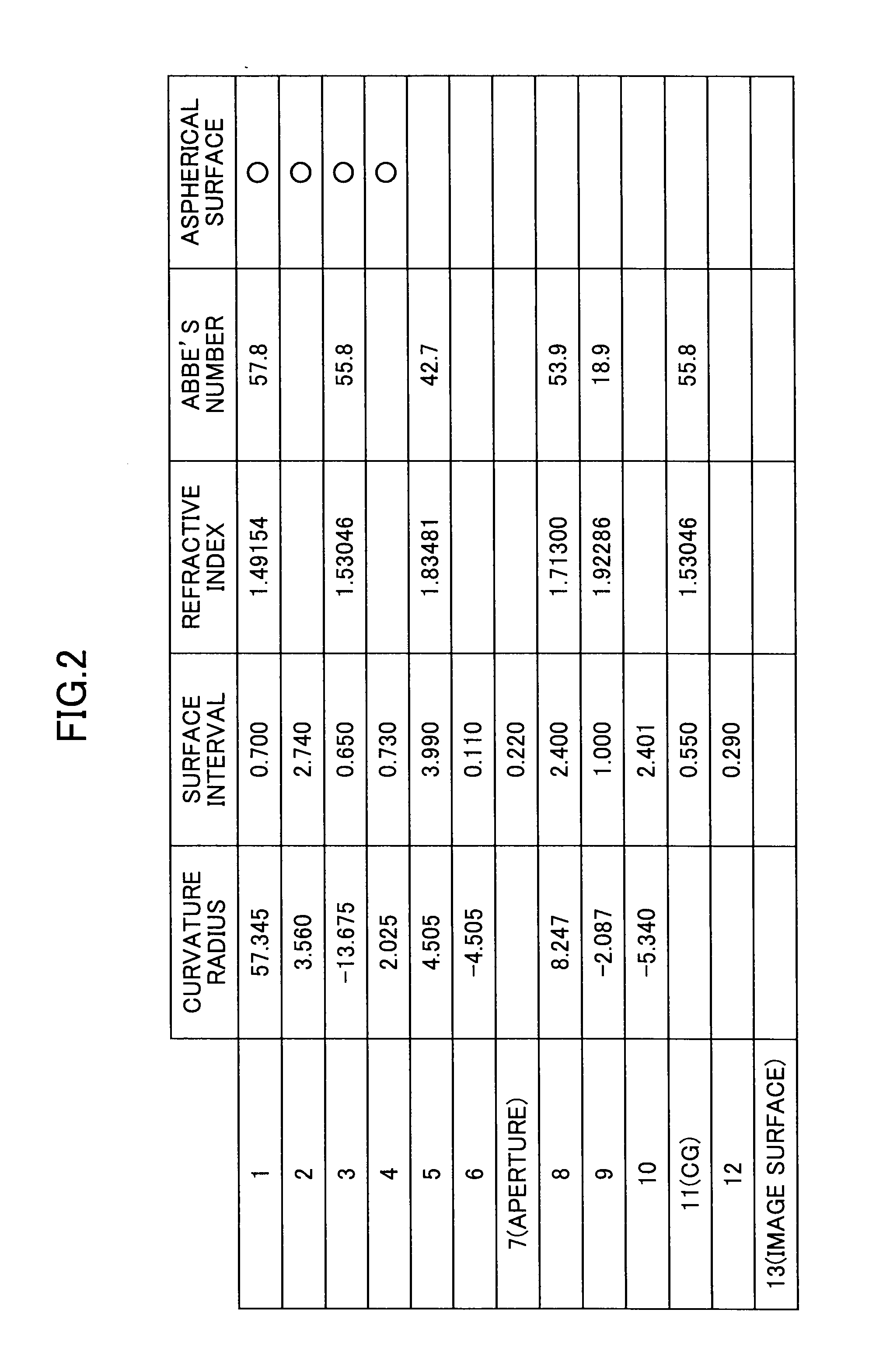Wide-angle lens and image pickup apparatus
- Summary
- Abstract
- Description
- Claims
- Application Information
AI Technical Summary
Benefits of technology
Problems solved by technology
Method used
Image
Examples
first embodiment
[0053]A specific embodiment of the wide-angle lens shown in FIG. 1 is described. Note that the unit of an amount having a length dimension is “mm.”
[0054]According to the first embodiment, the wide-angle lens has a viewing angle of 136° (semi-viewing angle of 68°) and a focal length of 1.986.
[0055]FIG. 2 shows the data of specifications related to the first embodiment. The leftmost column of FIG. 2 indicates “surface numbers” when the surfaces are counted from the surface on the object side of the first lens L1 to the image forming surface IS. The surfaces counted as the surface numbers include the lens surfaces, the surface of the aperture S, the both surfaces of the cover glass CG, and the image forming surface (described as the image surface in FIG. 2).
[0056]When the surface numbers are made to correspond to the surfaces of FIG. 1, the surface numbers 1 through 6 indicate the lens surfaces on the object side and the image side of the first lens L1, the second lens L2, and the thir...
second embodiment
[0078]A specific embodiment of the wide-angle lens shown in FIG. 9 is described. Note that the unit of an amount having a length dimension is “mm.”
[0079]According to the second embodiment, the wide-angle lens has a viewing angle of 190° (semi-viewing angle of 95°) and a focal length of 1.803.
[0080]FIG. 10 shows the data of specifications related to the second embodiment. Rows and columns in FIG. 10 according to this embodiment can be recognized in the same manner as those in FIG. 2 according to the first embodiment. FIG. 11 shows the data of aspherical surfaces according to the second embodiment.
[0081]In other words, the wide-angle lens according to the second embodiment has arranged therein a front group, an aperture S, and the rear group in this order from the object side to an image side. In the front group, a first lens L1 as a negative meniscus lens with its convex surface directed to the object side, a second lens L2 as a negative lens, and a third lens L3 as a positive lens a...
PUM
 Login to View More
Login to View More Abstract
Description
Claims
Application Information
 Login to View More
Login to View More - R&D
- Intellectual Property
- Life Sciences
- Materials
- Tech Scout
- Unparalleled Data Quality
- Higher Quality Content
- 60% Fewer Hallucinations
Browse by: Latest US Patents, China's latest patents, Technical Efficacy Thesaurus, Application Domain, Technology Topic, Popular Technical Reports.
© 2025 PatSnap. All rights reserved.Legal|Privacy policy|Modern Slavery Act Transparency Statement|Sitemap|About US| Contact US: help@patsnap.com



